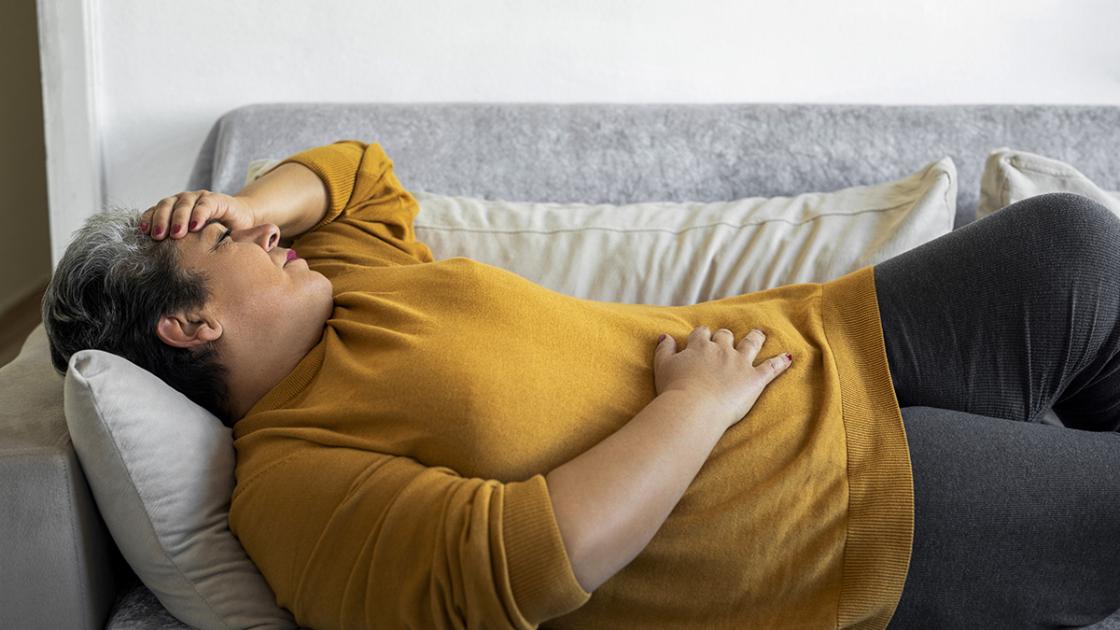
How to deal with side effects from weight loss medications
Medications that help to lower blood sugar levels and promote weight loss have emerged as a promising new option for people who struggle with their weight. These drugs, known as GLP-1 agonists, have proven to be very effective. However, like many medications, they may come with gastrointestinal (GI) side effects that can impact a patient’s comfort and adherence.
With the right strategies and a well-informed approach, managing these side effects is possible. You too can achieve a successful voyage towards a healthier weight.
Side effects + tips to address them
Nearly half of the people who take a GLP-1 weight management medication experience one or more GI side effects. The most commonly reported ones are nausea and vomiting, acid reflux, bloating, stomach cramps, diarrhea and/or constipation. While these symptoms are generally mild and temporary, they may make it difficult to stick with the treatment.
Most of these medications are prescribed at a lower dose and adjusted slowly over time to help your body adjust. Symptoms typically decrease as your body adapts to the medication and your eating habits change. Side effects may resolve initially but could occur again with a dose increase.
To get started on the right path, here are some general tips for minimizing these side effects.
1. Think about your food choices. As you are on a weight loss journey, you may already be making some dietary changes. Limiting high fat and greasy foods that take longer to digest can minimize nausea and cramping. Limiting concentrated sweet foods and sugary beverages will also help reduce side effects.
To help reduce acid reflux, limit spicy foods and choose bland foods that are easily tolerated, especially if you have been having more episodes of reflux. If you have constipation, don’t forget to include high fiber foods like fruits, vegetables, legumes and whole grains. Finally, remember to stay hydrated by drinking plenty of water!
2. Re-think portion sizes. When you start taking GLP-1 medications, you will likely begin to feel full much sooner than usual when eating a meal. This is the intended effect of the medication, but it can take time to get used to. Start out by serving yourself and eating smaller portions. Listen to your body when it starts to feel full so that you don’t feel nauseated after eating.
When possible, eat on smaller plates and bowls to help you visualize a smaller meal. If you are at a restaurant, ask for an empty container when ordering and put some of your meal in the container when it arrives. Or keep portions in check by ordering healthy appetizers, soups, salads or sides from the menu.
3. Listen to your body. Get in touch with your body’s signs of fullness and stop eating at the first sign of fullness. You may find that eating small, frequent meals will help you get enough protein and calories. While reduced appetite is often a desired effect, it’s crucial to still meet your daily nutritional needs. Pay attention to the number of hours between meals since your body may not give you hunger cues to eat. If you are feeling nauseated, drinking unsweetened ginger or peppermint tea may help.
4. Prioritize adequate nutrition. Even if you aren’t feeling hungry, it’s important to still consume healthy nutrients to preserve muscle mass and lean body mass. While it is best to get nutrition through whole foods, a protein drink can help provide your body with nutrients without making you feel nauseous. It can be an easy alternative when you are short on time or unable to eat a meal.
Some options include:
• Ensure® Max Protein
• Glucerna® Protein Smart
• Premier Protein®
• Muscle Milk®
• Fairlife® Protein
As you follow the path to a lower weight, keep track of your symptoms and share any concerns with your health care provider. Communicate regularly to ensure they can make adjustments to your dosage. While GLP-1 agonists offer a promising avenue for weight loss, managing the side effects will be a key aspect to improving your overall experience.




